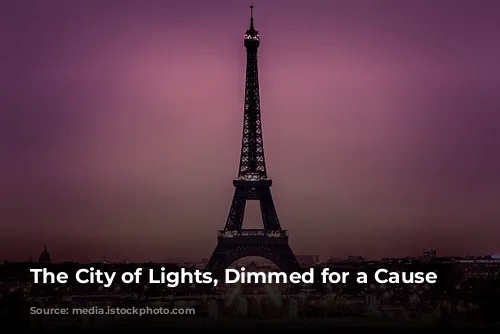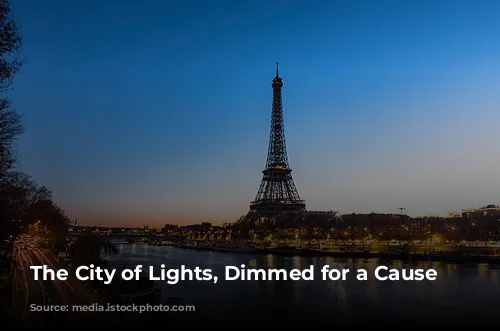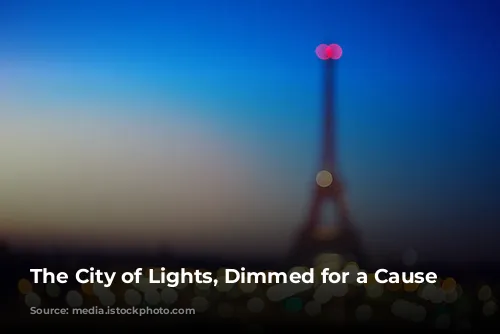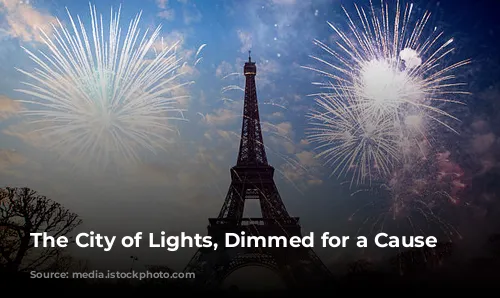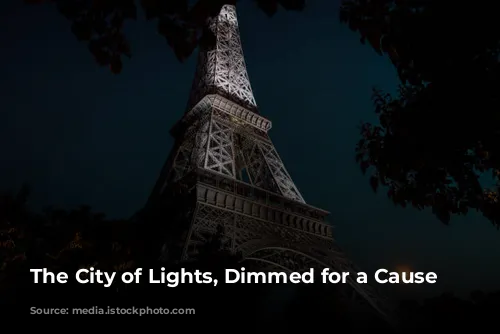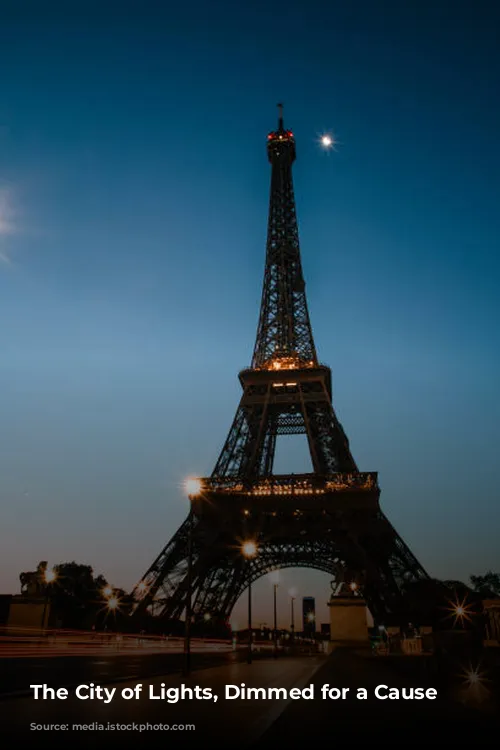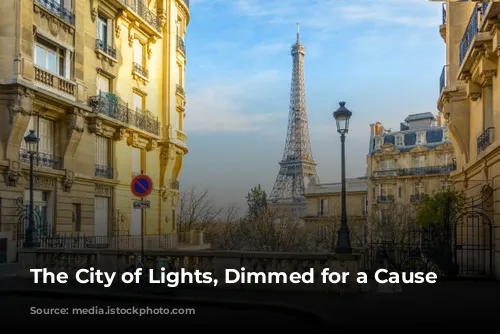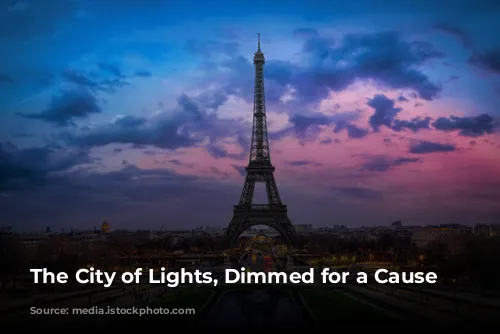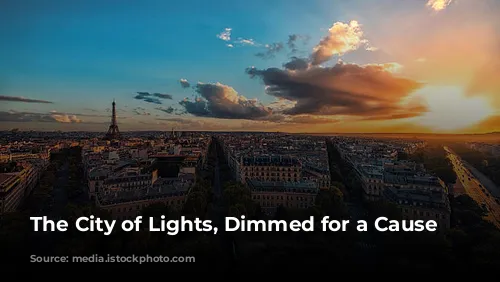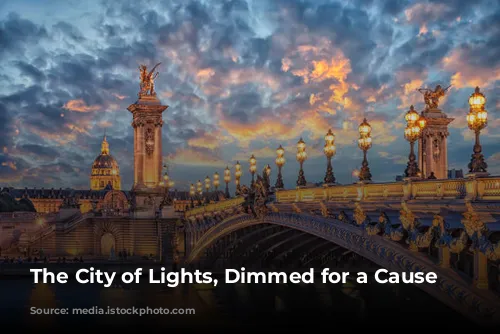Paris, the City of Lights, is about to experience a bit of darkness. In an effort to conserve energy, Parisian officials are taking steps to reduce electricity consumption. Starting this week, the iconic Eiffel Tower’s lights will be turned off an hour earlier than usual. This decision aligns with the tower’s closing time, ensuring visitors have ample time to enjoy its splendor.
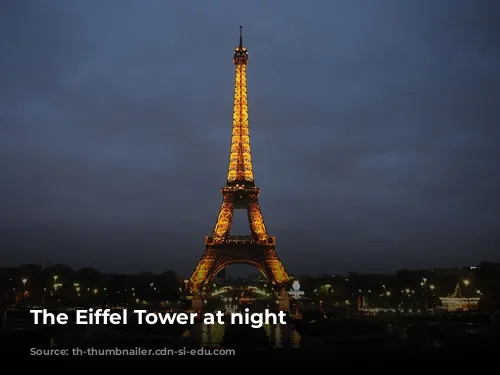
Turning Off the Lights, Turning On Conservation
The Eiffel Tower, a symbol of Parisian beauty, will now go dark at 11:45 p.m., instead of 1 a.m. Paris Mayor Anne Hidalgo, in a tweet last week, announced this new lights-out schedule. This move, she emphasized, is a symbolic step towards energy conservation.
The Eiffel Tower isn’t the only landmark affected by this energy-saving initiative. Other Parisian monuments and municipal buildings will also be plunged into darkness earlier than usual. This includes Saint-Jacques Tower and City Hall, which will switch off their lights at 10 p.m. However, officials will keep streetlights on throughout the city and maintain illumination on bridges over the Seine River, ensuring public safety.
Hidalgo has also voiced her support for reducing lighting at national monuments like the Arc de Triomphe and the Pantheon. This comprehensive plan aims to reduce energy consumption by about 10 percent, a target set by French President Emmanuel Macron earlier this summer.
Going Green, Going Smart
The City of Lights isn’t just focusing on lights; it’s taking a holistic approach to energy conservation. Public buildings will see their temperatures adjusted during business hours. Thermostats will be set to 64 degrees Fahrenheit (18 Celsius) during normal business hours, and lowered to 61 degrees Fahrenheit (16 Celsius) on evenings and weekends. Additionally, the heating season for public buildings will be delayed by a month, starting in mid-November instead of mid-October.
These energy-saving measures are a direct response to the widespread energy crisis gripping Europe. Russia’s invasion of Ukraine has led to a reduction in natural gas supplies to European countries, causing a surge in electricity and gas prices. The demand for energy is expected to increase this winter, making conservation efforts crucial to avoid blackouts and power shortages.
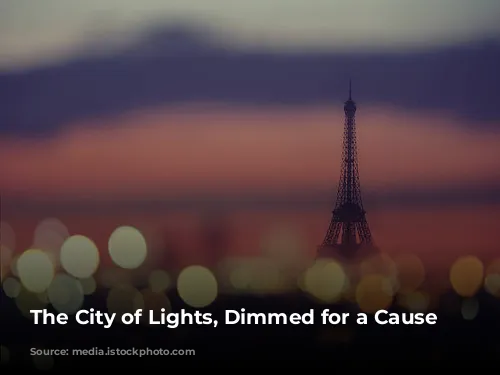
Europe’s Energy Crisis: A Shared Burden
Paris isn’t alone in facing this energy challenge. Other parts of Europe are also grappling with the energy crisis, leading to measures like temperature restrictions in public spaces. For instance, Spain has implemented regulations requiring shops, restaurants, bars, offices, and other public spaces to maintain air conditioning at or above 81 degrees Fahrenheit (27 Celsius) during the summer months. This regulation will also extend to the winter months, with a thermostat limit of 66 degrees Fahrenheit (19 Celsius).
The energy crisis has had a significant impact on European manufacturers. Many businesses have been forced to furlough workers and reduce production of essential goods, including steel, fertilizer, and even toilet paper. The situation is particularly dire for energy-intensive industries, with factory owners expressing concern over the crippling impact on their operations.
As the world grapples with the consequences of the energy crisis, Paris serves as a reminder that even the City of Lights must adapt to ensure a sustainable future. By embracing energy conservation, the city is taking a proactive step towards mitigating the impact of the crisis while inspiring others to join the effort.
